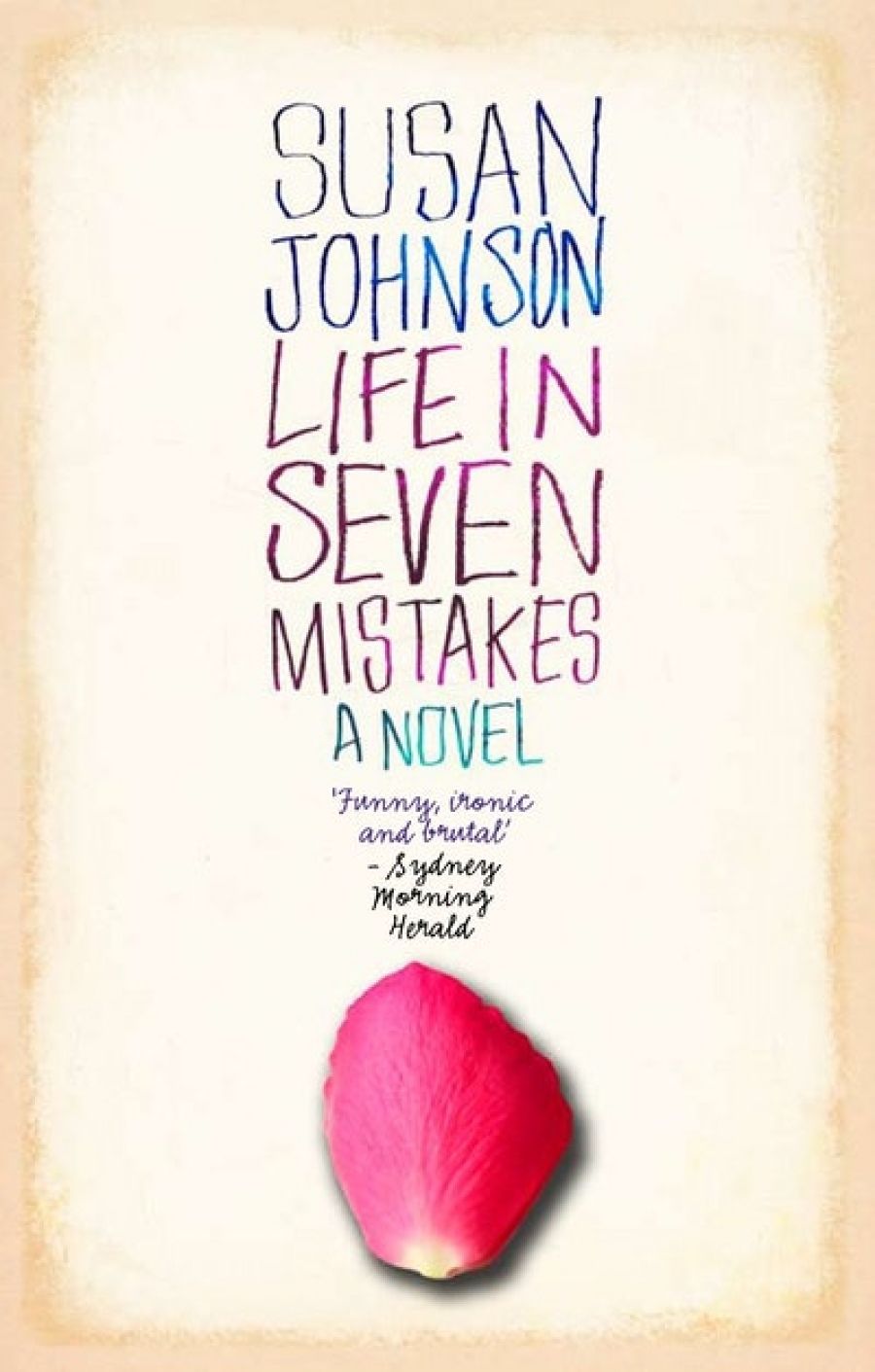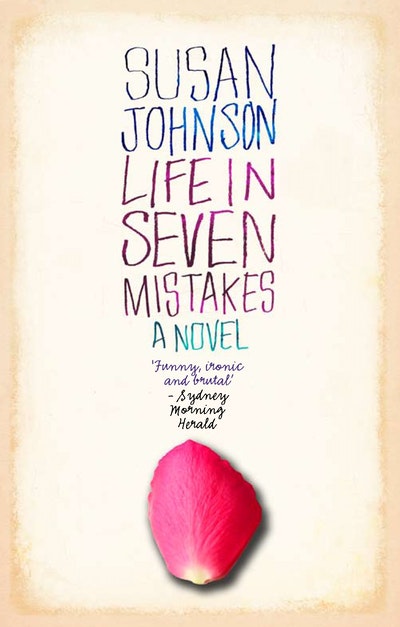
- Free Article: No
- Custom Article Title: Local corrections
- Review Article: Yes
- Article Title: Local corrections
- Online Only: No
- Custom Highlight Text:
The Barton family of Susan Johnson’s Life in Seven Mistakes is ‘unhappy after its own fashion’, to quote Tolstoy’s famous dictum. Elizabeth Barton’s perspective dominates the narrative. A 49-year-old ceramicist who lives in Melbourne and is preparing for her first exhibition in New York, Elizabeth is under pressure to complete some pieces needed for her opening. With her third husband, Neil, Elizabeth and her three children are spending Christmas with her parents. Bob and Nancy Barton have retired to the Gold Coast where they live in a vulgar, ferociously air-conditioned apartment. Also there are one of Elizabeth’s brothers, Robbie, with his wife, Katie, and their two children. The youngest brother, Nick, is in jail for drug offences and erased from the family narrative, but he is ever-present in Elizabeth’s mind.
- Book 1 Title: Life in Seven Mistakes
- Book 1 Biblio: Bantam, $32.95 pb, 352 pp
- Book 1 Cover Small (400 x 600):

- Book 1 Cover (800 x 1200):

The annual Barton Christmas en famille is a compulsory gathering and, predictably, tensions fester between the generations and between siblings. This might seem to be an overworked plot device, one that perhaps no one in recent writing could hope to do as well as American novelist Jonathan Franzen in The Corrections (2001), but Susan Johnson reworks it in her own compelling way. Elizabeth is repeatedly belittled by her dominating father, a (forcibly) retired CEO of an American engineering company, who, having lived for his work, now has nothing to do and is drinking too much. Embittered at his loss of status, he sneers at Elizabeth’s profession (it’s not real work) and is intolerant of her children. Her mother is a controlling, intrusive personality, withholding warmth from her family, habitually deferential to Bob and blind to his excesses.
Elizabeth seems entirely without allies: Neil, restless and unsympathetic, does not want to be there. Easy-going Robbie thinks Elizabeth is hostage to old wounds and should move on. Her sister-in-law gives egregious advice. Elizabeth tries to manage her bored children, feels guilty about Nick and longs to be at home working on her pots. Intent upon appeasing her parents, her adult personality is threatened as she struggles to maintain her self-esteem.
But the narrative is not confined to a one-sided account of Elizabeth’s pain in the present. Johnson constructs a complex picture of human relations, so that a bleak but compassionate account of how families fail emerges. This novel suggests that family intergenerational conflict is inherent and that, in this sense, all unhappy families are alike. In flashbacks, we see Bob and Nancy as lovers discovering sex, as a young married couple ‘playing house’, and as the devoted parents of young children. Bob’s career flourishes and they move from Jindabyne to Sydney and a big modern house in the suburbs. Nancy strives to be the perfect company wife and mother.
As they reach their teens, however, the children reject their parents’ values. The ethic of hard work and success that has sustained Bob and Nancy does not resonate with them. It is the 1960s, and Bob and Nancy are too forbidding. At thirteen, Elizabeth skips school to go to a peace rally; she wears outrageous clothes and, impetuous and headstrong, defies all Nancy’s strictures. She makes one unsuitable marriage after another, and has a child each time. The marriages disintegrate. Despite their horror at this and their complete lack of respect for Elizabeth’s art – practical people, to them ceramics is a frivolous hobby – her parents give her financial help. Nick, her hypersensitive little brother, fails at school and gets involved in the drug culture. Only Robbie, the sunny child, seems stable but, colonised by the outspoken Katie, he marries and departs. The nest is empty.
All of this is unsurprising; surely things were ever thus? Aggrieved and baffled, Bob and Nancy are unequipped to prevent the alienation of their adult children, and we feel their grief and bewilderment the more because we have become familiar with their younger selves. The central and universal question this novel poses is how so many elderly people atrophy into bitterness and inflexibility. Once they were hopeful and open to experience, but the Bob and Nancy of the present are hardly recognisable in their defensive retreat from change.
My only reservation about this moving and often funny book is that its resolution seems hastily imposed and is altogether too sweet. When the inevitable crisis comes, it is unconvincing that Elizabeth makes the decision that she does, though it is possible we are meant to see her final choice as a capitulation. Either way, there is too little in the foregoing narrative to account for it.


Comments powered by CComment